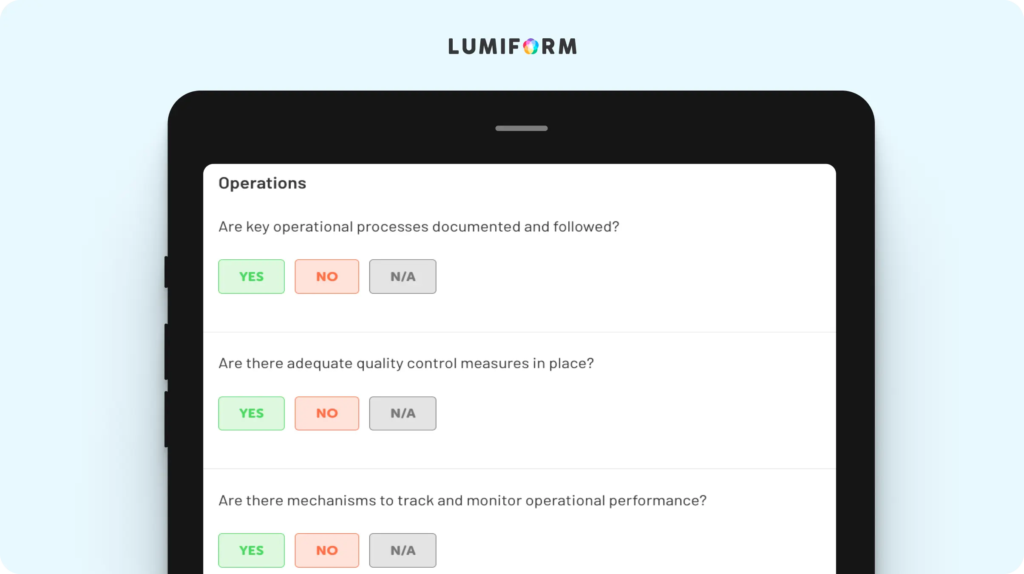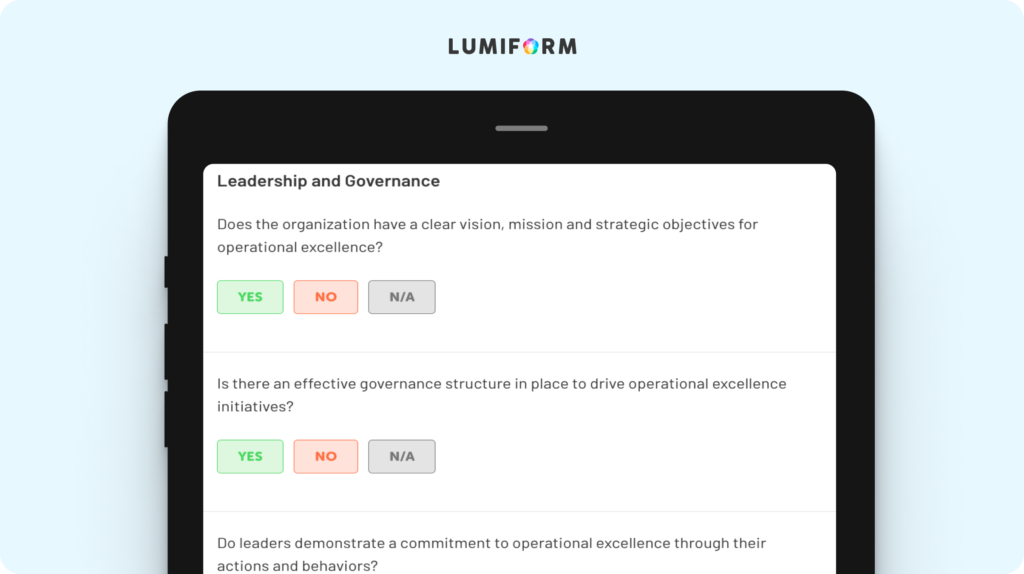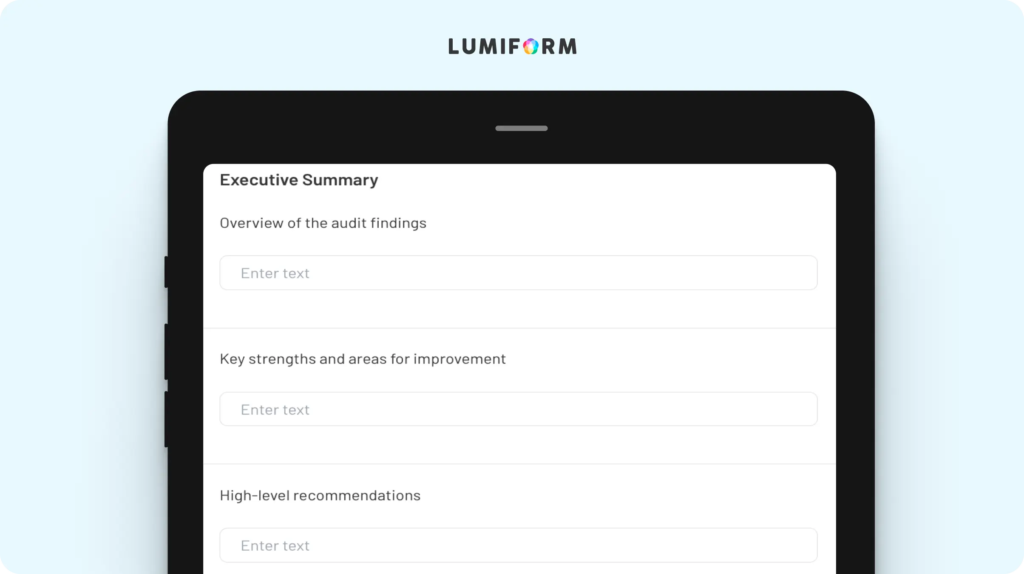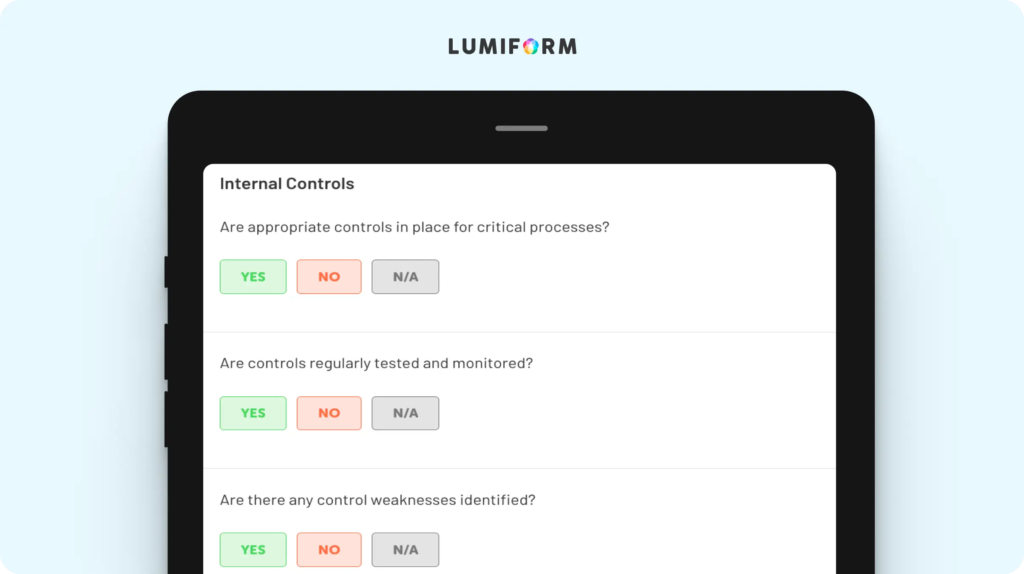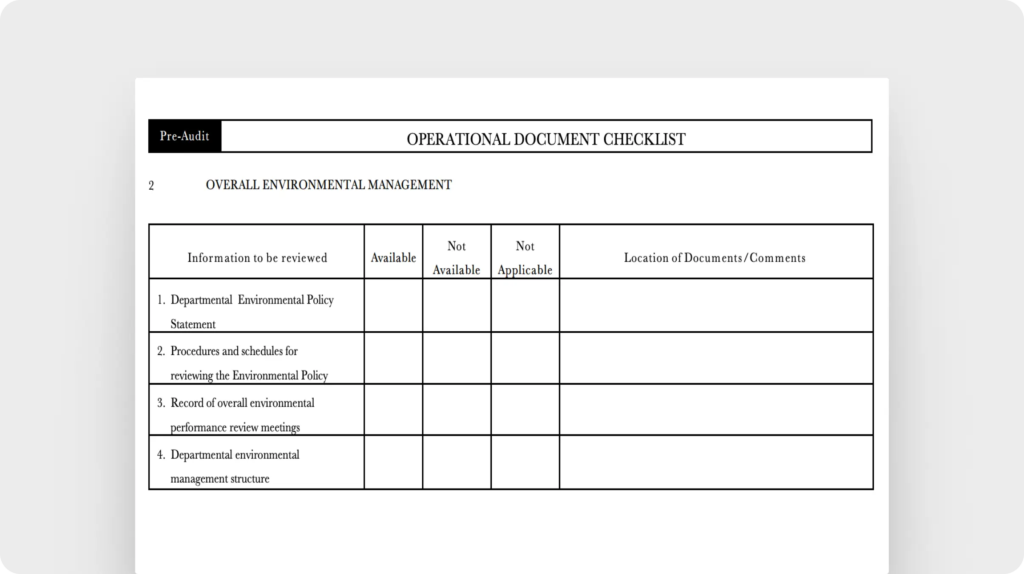Most operational issues don’t come up suddenly, out of nowhere—they build up over time, and it’s easy to miss them amidst daily routines. An operational audit checklist helps prevent this. It encourages you to keep your systems in check, uncover inefficiencies, and make sure your processes actually work the way they’re supposed to.
Checklists like these serve as your safety net. You can document findings clearly and spot red flags early before they become bigger problems.
Essential operational audit checklist templates
Use the templates below to streamline your audits and smooth out workflows:
Operational audit checklist
Dig into the nuts and bolts of daily operations with this checklist. It guides you through a comprehensive review of processes, performance, and compliance. You’ll cover key areas like resource usage, standard operating procedures, risk points, and internal controls so you can spot inefficiencies before they snowball into larger issues. It’s an ideal tool for ongoing internal audits or preparing for external inspections. To tailor it to your business, simply adjust sections to reflect your operational priorities—swap in your own compliance criteria or department-specific checkpoints.Operational excellence audit checklist
If your goal is continuous improvement, this template is for you. The operational excellence audit checklist helps you assess how well your teams are aligning with lean principles, best practices, and strategic goals. It tackles key areas like employee engagement, process flow, KPI tracking and quality control. With logic-based questions and the ability to upload supporting documentation, you get a deeper view of what’s working and where to adjust. It’s flexible too—customize the categories to match your core pillars, whether that’s safety, quality, delivery, or cost.Operational audit report template
Turning audit findings into an action plan can be half the battle. This report template gives you a clean, structured format to summarize observations, highlight issues, and recommend actions. You’ll be able to log down your audit scope, team details, non-conformities, and follow-up tasks. There’s also space to link supporting evidence like photos or signatures. You can tweak the structure based on your internal reporting standards or external audit requirements, ensuring the final report speaks your language. Use it after internal checks or third-party reviews to make your insights more impactful.Operational audit program template
A one-off audit is helpful, but a well-planned audit program is how you get results that stick. This template aids you in setting up a repeatable audit process—covering audit timelines, assigned roles, and methodology. You can lay out what gets reviewed and by whom, making expectations crystal clear across departments. This template works well for long-term planning and cross-functional collaboration. Adjust the timeframes or focus areas based on regulatory demands, seasonal risks, or business changes. It’s a proactive tool that supports you in creating a culture of regular checks and clear accountability.Operational document checklist
This comprehensive checklist from the Hong Kong Environmental Protection Department is designed to streamline internal audits and ensure environmental compliance across multiple areas of operation. Spanning 14 detailed sections, it assesses hazardous material handling, energy use, wastewater management, air quality, and more. The table format is easy to fill out, and there’s space to add comments, making it convenient for teams to identify gaps and prepare for external audits. Whether you’re managing environmental performance in an office, lab, or public service unit, this checklist supports you in assessing operational transparency and regulatory alignment.
How to create an operational audit checklist template in Lumiform
Creating a reliable operational audit checklist starts with a clear goal: helping your team spot inefficiencies and keep processes running smoothly. With Lumiform, you can build a fully tailored template quickly using the AI form builder or by tweaking a pre-made template to match your workflow. Add relevant fields like multiple-choice questions, free-text responses, or photo uploads to record findings thoroughly during the audit.
Make it convenient for auditors to use on-site by enabling access via the mobile app, so checks can happen anywhere, even offline. You can also assign follow-up tasks immediately if issues are flagged, helping your team act fast and stay accountable.
After the audit, use built-in analytics to spot patterns across audits and export clean reports to share with stakeholders. The result? A custom checklist that’s not just easy to fill out—but one that drives real, actionable insight.

